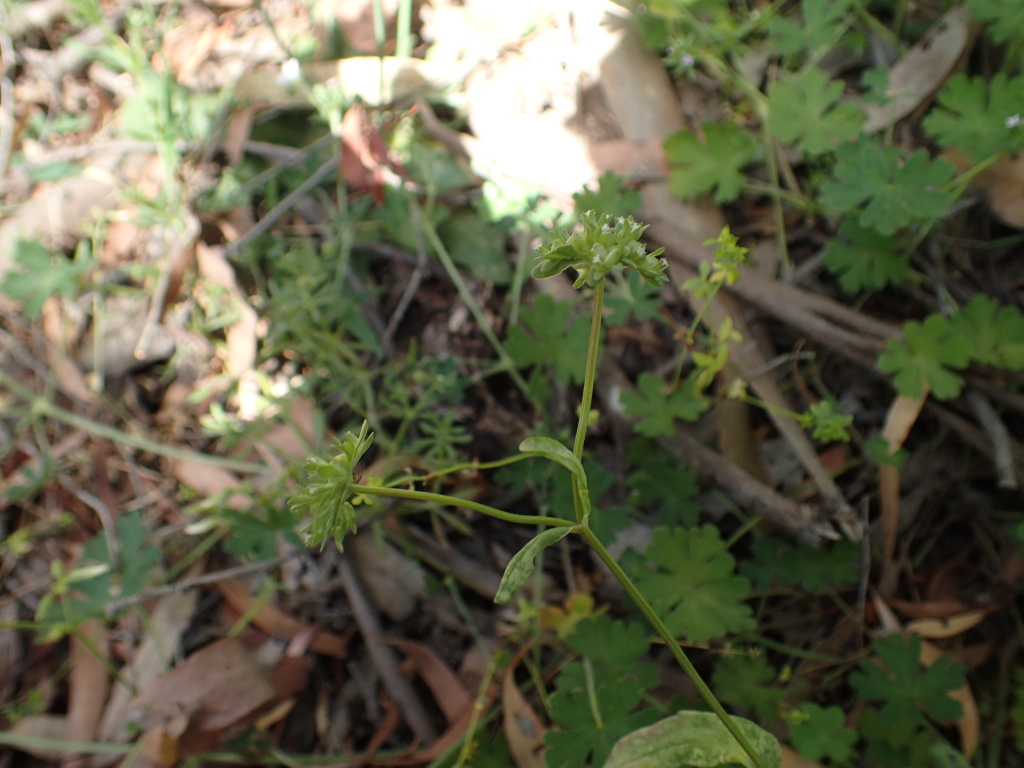Valerianella locusta
(L.) Betcke Corn-saladSuberect or decumbent rosetted herb with branches to c. 40 cm long; branches with short bristly hairs mainly along ridges. Rosette leaves petiolate, broad-spathulate to ovate, mostly 2–7 cm long and 0.5–2 cm wide, glabrous except for a few hairs on margins and veins, obtuse, entire or sinuate; upper leaves c. sessile, becoming ovate-spathulate to lanceolate, entire or sinuate. Inflorescences of 1-several corymb-like dichasia, many-flowered; bracts oblong-spathulate, green, clasping flowers and fruit. Calyx reduced to a single minute tooth or rudimentary; corolla pale lilac, tube funnel-shaped, to c. 1 mm long, lobes oblong-lanceolate, to c. 1 mm long, sub-equal; stigma with 3 short thread-like branches. Cypsela subglobose, c. 2 mm long, slightly compressed, ridged on both sides, glabrous. Flowers mainly Oct. and Nov.
Gold, HSF, HNF. Native to Europe. Cultivated as a salad plant (the leaves are used in the same way as lettuce, Lactuca saligna L., but are coarser) and occasionally naturalised.
Jeanes, J.A. (1999). Valerianaceae. In: Walsh, N.G.; Entwisle, T.J., Flora of Victoria Vol. 4, Cornaceae to Asteraceae, pp. 647–649. Inkata Press, Melbourne.
 Spinning
Spinning
